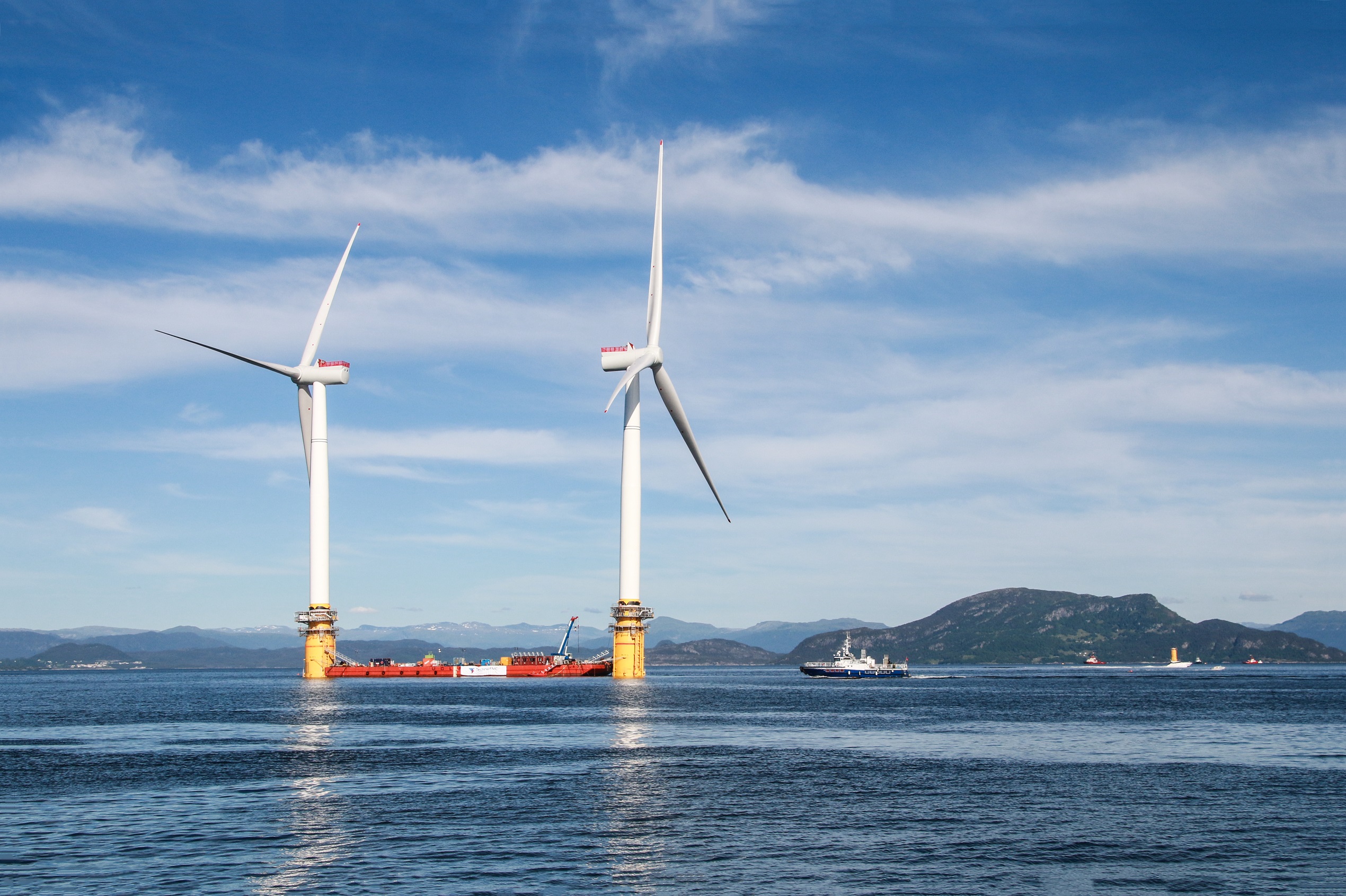UK's biggest offshore wind farm is not in jurisdiction of English patent law
Published on 3rd February 2023
The Patents Court has found that an offshore wind farm is not within the territorial ambit of the Patents Act 1977

In a recent decision, Siemens Gamesa Renewable Energy A/S v GE Energy (UK) Ltd [2022] EWHC 3034 (Pat), Mr Justice Meade held that the Patents Act 1977 could not be relied on to enforce rights in the offshore location of the UK's biggest wind farm development.
Siemens' patent was held to be invalid and GE was found not to infringe. The case is part of an ongoing global dispute concerning wind turbines between General Electric (GE) and Siemens Gamesa. More broadly, the rise in wind power as an energy source has come with an increase in global patent disputes and in the focus on intellectual property rights connected with this increasingly high-profile renewable.
Haliade-X wind turbines
Siemens claimed that one of its UK patents, which was directed to a structural support arrangement in the rotor hub of a wind turbine, was infringed by GE's Haliade-X wind turbines. Siemens alleged that both the fully assembled Haliade-X and, separately, the rotor hub alone infringed the patent in suit.
The Haliade-X wind turbines are being deployed in the creation of one of the world’s largest offshore wind farms located at Dogger Bank off the north-east coast of England. Dogger Bank is the only site at which the Haliade-X wind turbines are fully assembled. An important issue in the proceedings was whether Dogger Bank fell within the territorial scope of the Patents Act. In addition, the unassembled parts (including the rotor hub) of the Haliade-X were kept at a port in the UK, which Siemens alleged also amounted to infringement of a different claim of the patent in suit, or a "kit of parts" argument.
On the facts of the proceedings, Mr Justice Meade found the patent in suit was invalid for obviousness and, in any event, neither the Haliade-X turbine nor its rotor hub infringed Siemens' patent.
Territorial ambit: the Patents Act
Siemens' first argument was that the Haliade-X wind turbines deployed at Dogger Bank infringed the patent in suit. However, Mr Justice Meade held that had Siemens' patent been valid and had GE's turbines fallen with the scope of the claims then GE's activities at Dogger Bank still would not have infringed, as the wind farm was not within the territorial scope of the Patents Act 1977.
The components of the Haliade-X turbines are manufactured outside of the UK and the final assembly occurs on site at Dogger Bank, which is located 130-190km off of the north-east coast of England. This sits outside the territorial waters of the UK and therefore outside of the jurisdiction of most UK legislation.
However, the territorial scope of the Patents Act is extended to apply to areas designated under the Continental Shelf Act 1964, which included Dogger Bank, and the Petroleum Act 1998. However, the extension of the Patents Act is "purpose" limited by the Petroleum Act to "activities connected with the exploration of, or the exploitation of the natural resources of, the shore or bed of waters to which this section applies or the subsoil beneath it".
The question for Mr Justice Meade was, therefore, did the installation of wind turbines at Dogger Bank fall within the purpose limitation set out by the Petroleum Act?
International law: UNCLOS
The judge took into account the international law forming the backdrop to the UK legislation, particularly the UN Convention on the Law of the Sea (UNCLOS), which established the legal framework to give coastal states rights in oceans and seas outside of their territorial waters.
Siemens sought to rely on articles in UNCLOS that give coastal states the right to construct artificial islands and use tunnelling in the subsoil to suggest that the Petroleum Act should apply to activities related to wind turbine installation. However, the judge held that these provisions are to ensure that states can undertake these ancillary activities to exploit natural resources – that is, where it might not be possible to undertake the exploitation without them. Therefore, the relevant UNCLOS provisions did not extend the meaning of the "purpose limitation" in the Petroleum Act and the relevant words were given their ordinary meaning.
Siemens also tried to argue that the act of anchoring wind turbines into the sea bed could still amount to the required "exploitation". This was rejected as no natural resources were being exploited by anchoring the wind turbines to the sea bed. Rather, what was taken advantage of was the "mere existence of the sea bed and the subsoil beneath it". In the circumstances it did not make sense to say that the rock was being used as a resource: it just was rock. Drilling out some rock and doing nothing with it was not "exploitation" as required to fall within the territorial purpose of the Petroleum Act.
UNCLOS does entitle coastal states to enact legislation to exploit the continental shelf for the production of energy from water, current and winds; however, the UK has not extended the Patents Act to cover this.
Turbine assembly
Siemens' second argument was that the rotor hubs, which were assembled at port in the UK, before final installation in the Haliade-X turbines at Dogger Bank, infringed a separate claim of the patent in suit. This was a more conventional patent infringement argument and did not depend on Dogger Bank being within the scope of the Patents Act.
This highlights the importance of considering the implementation of an invention when drafting patent claims. Siemens' approach was held to be a "rational approach by a patentee to an invention which lies in only part of the overall product and in relation to which the complete product could well be made or kept (as to all of its individual components) but not fully assembled in a given jurisdiction".
However, on the facts this argument was also unsuccessful because of the judge's findings that the patent in suit was invalid and the Haliade-X rotor hub did not fall within the scope of the relevant claim in any event and so would not have infringed, even when it was not in an assembled turbine.
Kit of parts
Finally, Siemens also advanced a "kit of parts" infringement argument, on the basis that the unassembled components of the wind turbine were all present at port in the UK before transportation to Dogger Bank and this constituted infringement.
Mr Justice Meade reviewed briefly the law on this argument but decided that the kit of parts point was not necessary to the outcome of the action and so declined to decide the point. He highlighted the divergence between kit of part decisions in Germany and Netherlands, and the decision of Mr Justice Arnold in Virgin v Delta, before concluding that the point would be better determined in a case where it would be decisive because it is a matter of law of "some complexity".
Osborne Clarke comment
The territorial aspects of this judgment are of particular interest to innovators in the offshore wind market. The decision prompts questions on how an invention deployed in an offshore location can be effectively protected, especially if the turbine is only fully assembled in that location. With offshore wind capacity in the UK planned to quadruple by 2030, it is likely that we will see these questions examined again in the UK courts.
Patentees may also need creative legal arguments and consider carefully how best to protect and assert their patent rights in this field. The judgment highlights the importance of forward planning when drafting patent claims. Directing a claim towards the separate components of a turbine that can be more readily asserted within the UK's territory may ensure more effective protection of the invention.
Julia Smith, Trainee Solicitor with the IP Disputes team at Osborne Clarke, co-authored this Insight.




